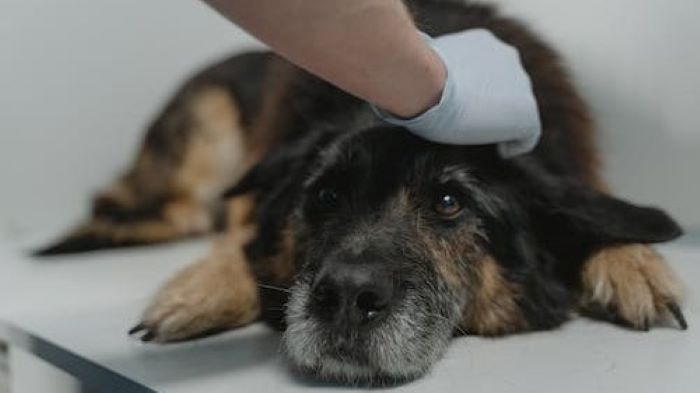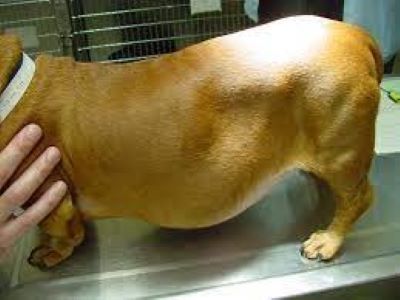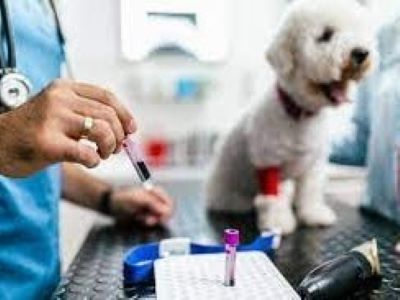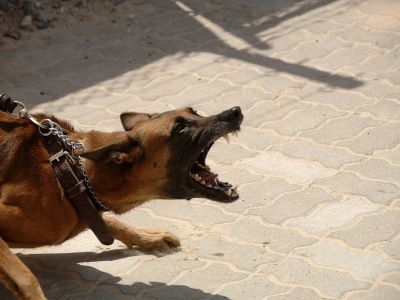Your best buddy, who has been exhibiting signs of aging lately, is actually suffering from a grave disease. The vet informed you that it’s Cushing’s Disease and you could only nod, unsure of what that entails.

Even though you followed the doctor’s instructions, the terrible day has come. It will be the most humane decision to put your pet to sleep and free it from its misery. But, is it really time?
Key Takeaways
- Cushing’s Disease occurs due to excess cortisol which results in other symptoms such as an increase in appetite and water intake.
- Cushing’s disease often affects middle-aged or older dogs, usually between the ages of 7 and 12. Many people mistake the symptoms of this condition for indicators of aging.
- At the final stage of this disease, the quality of life fades. The fur gets thin, dogs become weak, and also show behavior change.
- Giving your pet a peaceful death by euthanasia is a selfless act, even though it’s a difficult decision to make.
- Be patient with yourself when coming to terms with your pet’s death.
What is Cushing’s Disease?
Cushing’s disease develops when the adrenal gland is overactive.
“Cushing’s disease (CD) is a common endocrinological disorder in dogs with an estimated incidence of 1 to 2 cases/1,000 dogs/year” says experts from PubMed.
The most common reason for this is a tumor developing in the outer part of the pituitary gland. The tumor can be benign (non-cancerous) or malignant (cancerous). This tumor makes the pituitary gland release a hormone (ACTH) that makes the adrenal gland work overtime and release excess cortisol.
Excess cortisol can cause the 5Ps (symptoms):
- Polyphagia (increased appetite)
- Polydipsia (increased drinking)
- Polyuria (increased urination)
- Pot Bellied
- Panting

Other causes include tumor of the adrenal gland and prolonged steroid usage.
Some dog breeds like the Poodle, German Shepherd, and Maltese are prone to Cushing’s disease. Since this disease is endocrine rather than infectious, there is sadly no vaccine for it.
How is Cushing’s Disease Diagnosed?
Dogs with Cushing’s disease[1] are often middle-aged or older, ranging in age from 7 to 12 years. Many misinterpret the signs of this illness as an indication of aging. For this reason, blood tests are crucial in the diagnosis and confirmation of Cushing’s disease. ACTH stimulation test[2] is the most common test that is run.

Additionally, an ultrasound aids in ruling out other possible conditions.
The tumor in the pituitary gland is treated by two drugs: trilostane and mitotane, which help in reducing cortisol levels. Iatrogenic Cushing’s disease (caused by prolonged use of steroids) is treated by withdrawing from steroids while adrenal gland tumor requires surgery.
What are the Final Stages of Disease?
At the final stage, your pet’s life quality will be severely affected. Diabetes or a kidney-related ailment will manifest. The neurological behavior of your pet will alter. They could grow hostile. They’ll get weak and find it hard to breathe.

You as a responsible parent will have to be patient with your pet. If they act aggressively towards you, it is best to take it as a warning and consult your vet. Consider euthanizing after discussing it with your veterinarian.
When to Euthanize a Dog with Cushing’s Disease?
It is one of the most soul-crushing decision to take for your loved one’s peace. If you notice that their quality of life has receded drastically, it is time to release them from their misery. It would be selfish to let your dog’s suffering go on.
To ensure your pet is as comfortable as possible and is accompanied by loved ones, you may request your veterinarian to perform the procedure at home. The procedure is swift, and your dog will pass away with the least amount of pain.
How to You Accept Letting Go of Your Pet?
It is absolutely understandable to grieve a family member. Give yourself grace and patience, just as you would someone else. Take time off work or school if it helps.

The memories of your dog can be preserved in a variety of ways. A lock of hair is gladly provided by veterinarians. Another option is to keep their ashes. Always think that your dog is at peace. Lastly, if you feel ready, welcome a new pup.
FAQs
Are dogs with Cushing’s disease in pain?
It doesn’t pain the dog although, in later stages, they can develop chronic fatigue. Most symptoms are manageable at early stages.
What are the signs of worsening Cushing’s disease in dogs?
There will be excessive urination and thirst. Dogs’ skin will get thinner and they will start losing fur.
Is there a natural cure for Cushing’s disease in dogs?
Supplements containing lignans and melatonin are readily available at pet stores and can be helpful. However, there is no cure set in stone.
What is the best food for a dog with Cushing’s disease?
A well-balanced diet that is rich in fiber, low in fat, and easily absorbed protein is beneficial.
How much water should a dog with Cushing’s drink?
Water intake for dogs is one ounce per pound. Dogs ought to consume three or twice as much water after a meal.
Conclusion
Both you and your pet were in this long, bumpy journey together. Remember that you gave everything you could for your puppy. And you only let go when you realized how painful of an existence it was for your pet. It is the most generous decision you could take.
Be at peace with yourself; it will come with time to heal. Be hopeful for a new pet, a new addition to the family and a whole lot of new memories.
References:
- Cushing’s disease in dogs | VCA Animal Hospitals.
- Canine adrenal and pituitary function tests. Cornell University College of Veterinary Medicine.



